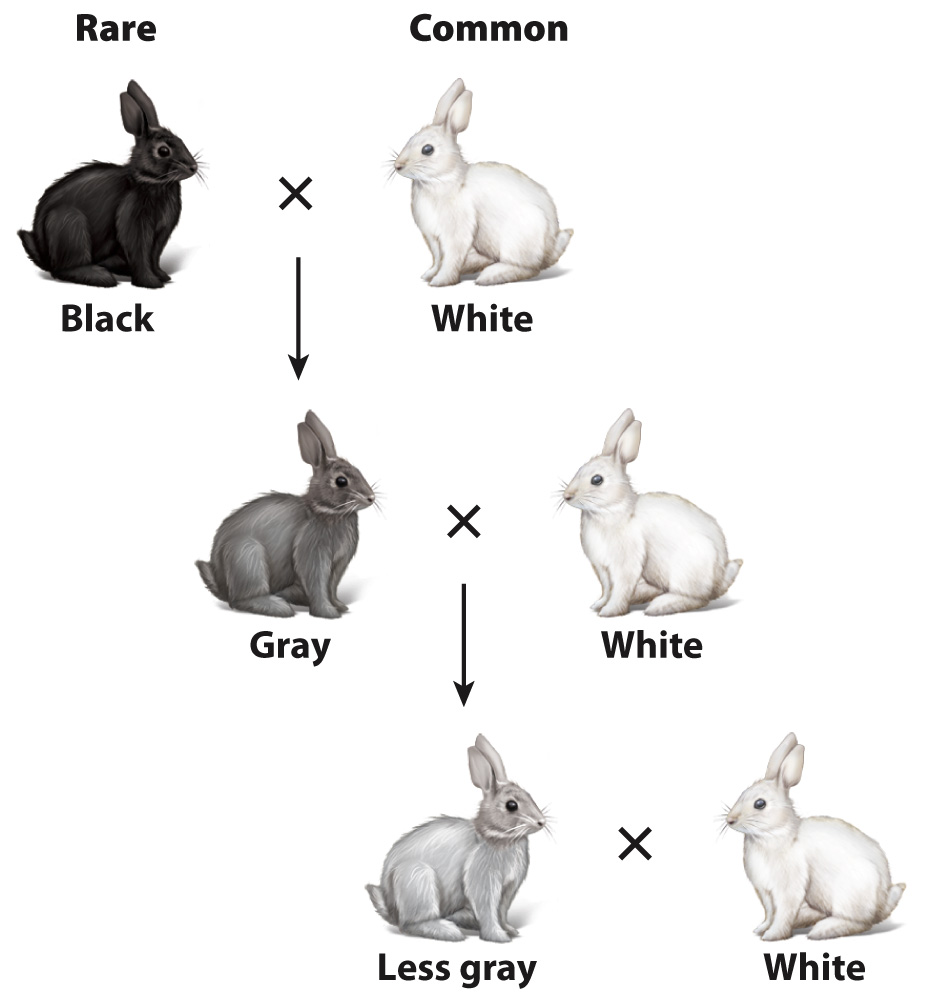Belief in blending inheritance discouraged studies of hereditary transmission.

Darwin subscribed to the now-
Another difficulty with the concept of blending inheritance is that variation is lost over time. Consider an example where black rabbits are rare and white rabbits are common (Fig. 16.1). Black rabbits, being rare, are most likely to mate with the much more common white rabbits. If blending inheritance occurs, the result will be gray rabbits. These will also mate with white rabbits, producing lighter-
Whatever the trait may be, blending inheritance predicts that inheritance will tend to be a homogenizing force, producing in each generation a blend of the original phenotypes. But we know from common experience that variation in most populations is plentiful.
It is ironic that Darwin believed in blending inheritance because this mechanism of inheritance is incompatible with his theory of evolution by means of natural selection. The incompatibility was pointed out by some of Darwin’s contemporaries, and Darwin himself recognized it as a serious problem. The problem with blending inheritance is that rare variants, such as the black rabbits in the above example, will have no opportunity to increase in frequency, even if they survive and reproduce more than white rabbits, since they gradually disappear over time.
Although Darwin was convinced that he was right about natural selection, he was never able to reconcile his theory with the concept of blending inheritance. Unknown to him, the solution had already been discovered in experiments carried out by Gregor Mendel (1822–1884), an Augustinian monk in a monastery in the city of Brno in what is now the Czech Republic. Mendel’s key discovery was this: It is not traits that are transmitted in inheritance—